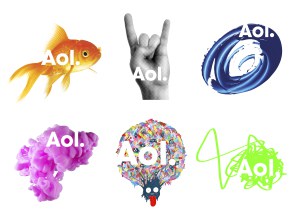Time Warner Cable unveiled a new website this afternoon, RollOverOrGetTough, asking customers whether they want the company to “roll over” and pay the prices cable programmers demand or “get tough” and threaten to drop channels that demand too much.
This, of course, is rich coming from the company that loves to raise your rates every year, overcharge you for your broadband service with experimental usage caps and “consumption billing,” and has had a long history of owning and/or controlling many of those ‘greedy cable networks.’ Oh, and they won’t give you the choice of paying for just the channels you want to watch, either.
Want to send a message to the cable network bad-boys that demand too much? Give your customers the right to opt out.
 The cable industry has fought a long-running battle with cable programming networks over the fees they pay on a per-subscriber basis to carry those channels. The revenue earned by those networks helps them acquire programming that is attractive to potential viewers, and the advertisers that follow. Back in the 1970s and 1980s, most cable subscribers spent their time watching local broadcasters, “superstations” — imported TV stations from cities like New York, Chicago, Atlanta, and Los Angeles, and premium movie channels. The basic cable networks back then didn’t run off-network TV shows. Most ran cheaply produced documentaries, talk shows, imported shows from overseas, limited interest cultural programming, or music videos. Sports programming rarely involved major teams, or major sporting events for that matter.
The cable industry has fought a long-running battle with cable programming networks over the fees they pay on a per-subscriber basis to carry those channels. The revenue earned by those networks helps them acquire programming that is attractive to potential viewers, and the advertisers that follow. Back in the 1970s and 1980s, most cable subscribers spent their time watching local broadcasters, “superstations” — imported TV stations from cities like New York, Chicago, Atlanta, and Los Angeles, and premium movie channels. The basic cable networks back then didn’t run off-network TV shows. Most ran cheaply produced documentaries, talk shows, imported shows from overseas, limited interest cultural programming, or music videos. Sports programming rarely involved major teams, or major sporting events for that matter.
By the early 1990s, virtually every basic cable network was either owned outright or in part by one of the major national cable or broadcasting companies. NBC and ABC dabbled in cable themselves, while CBS steered clear after being burned by a terrible experience with CBS Cable in the early 80s. Launched as a cultural network devoted to opera, theater, and dance, it shut down a year after launching, having attracted minuscule audiences.
The lesson learned — create or buy programming viewers will actually want to watch. That takes money, and the fees charged to cable operators for cable networks began rising rapidly. Suddenly, off-network TV shows viewers used to watch on WPIX, WGN, WWOR, KTLA, or WTBS suddenly started showing up on basic cable instead. The biggest turning point came when sports networks like ESPN started bidding for, and winning the rights to televise major league sporting events. Nothing costs more than sports, and broadcast and cable networks have been bidding up prices ever since.
As basic cable networks became popular with viewers, their ability to make demands on cable operators grew exponentially. Suddenly, certain cable networks demanded they be given low channel numbers, that cable companies had to also carry affiliated spin-off cable networks if they wanted access to their primary service, and that programming must always be carried on basic cable — not on some digital cable tier or other similar extra-cost tier.
For years, cable operators didn’t care too much as they just passed the increases on to customers. Where could viewers go except to the cable company? I recall the sticker shock customers had when basic cable first exceeded $20 a month, then $30. Today it’s headed for $60 a month in many areas. Cable companies attempted to placate angry customers by adding several new channels to the lineup just prior to the rate hike letter, telling them they were now receiving greater value than ever from their cable company. The following year, those new channels wanted more money, too.
The “500 channel universe” that sounded promising a decade ago is now a nuisance for many subscribers, irritated they are paying for hundreds of channels they never watch.
[flv width=”480″ height=”380″]http://www.phillipdampier.com/video/WIVB Buffalo Report on TWC Campaign 11-25-09.flv[/flv]
WIVB-TV Buffalo reported on Time Warner Cable’s fight against programming prices, but itself (along with sister station WNLO-TV) was thrown off Time Warner Cable’s cable lineup over a contract dispute for most of October, 2008. LIN TV Corporation, owner of both stations, had reportedly demanded 25 cents per month per subscriber for permission to carry the stations on cable. (1 minute)
In a difficult economy, justifying a $150-200 cable bill for television, broadband, and phone service is harder than ever. Consumers want new options. Satellite television provided limited competition, and a few large phone companies are set to deliver a bit more. But some subscribers have decided paying this kind of money for television every month is outrageous, and they have finally jumped off the merry-go-round. Some younger people are never getting on, relying entirely on their broadband service to watch television programs and movies on demand.
Time Warner Cable’s attempt to enlist customers in their sudden war on programming rate increases is likely to be seen by many as a classic pot to kettle cable quandary. The company that still wants to force Internet Overcharging schemes on their broadband subscribers and is now raising rates in many areas has some chutzpah asking customers to fight for them:
No one likes paying more. You don’t. We don’t. Yet, every time our contracts with TV program providers come up for renewal, that’s what we face. Price increases. Big ones. Up to 300% more. Sometimes we can avoid passing them on to you. Sometimes we can’t. Sometimes, a network will threaten to take your shows away if we don’t roll over. Whenever that’s happened in the past, we’d make the best deal we could and hope that would be the end of it. But it never was. So no more. The networks shouldn’t be in the driver’s seat on what you watch and how much you pay. You’re our customers, so help us decide what to do. Let us know if you want us to Roll Over, or Get Tough. We’re just one company, but there are millions of you. Together, we just might be able to make a difference in what America pays for its favorite entertainment.
[flv width=”408″ height=”296″]http://www.phillipdampier.com/video/TWC The NFL Wants You To Pay Ad.mp4[/flv]
Time Warner Cable ran this ad in its dispute with the NFL Network over carrying the channel on cable lineups. Warning: Loud Audio (30 seconds)
To be sure, cable companies are confronted by some pretty bad offenders during contract renewals. Some demand several dollars a month per subscriber, whether you watch the channel or not:
NFL Network: This one has been kept off Time Warner Cable for years because they want an enormous amount of money and demand to be carried on the basic cable lineup, where they can expose every subscriber to their monthly programming fee. TWC has repeatedly said no because a significant part of any rate increase will come from just this single network.
Sports Networks: In general, the biggest price hikers are sports channels. ESPN and its sister channels demand several dollars a month for every subscriber. Single sporting event channels, particularly YES, the Yankees network are also often very expensive. Regional sports channels are obscenely expensive, and many cable systems finally forced them into their own sports tier, where those who want them pay for them.
Fox/News Corporation: Fox News Channel in particular commands mind-boggling subscription fees, usually more than every other news channel combined. Many systems also got stuck carrying and paying for Fox Business News, a ratings dog attracting fewer than 20,000 viewers nationwide at any one time. Time Warner Cable faces expiring contracts for many Fox channels, and the renewal of them (at characteristically higher rates) will likely involve a brutal battle over what subscribers will be stuck paying for FX, Fuel, Speed, Fox Soccer, and several regional sports networks. That’s before the cable operator also has to conduct negotiations over how much Fox-owned local stations are going to demand in return for carriage on Time Warner’s lineup.
The nastiest battles are often fought with local television stations, especially when they are collectively owned by a single company. Sinclair Broadcasting, which owns several Fox and other network affiliated stations, is known for playing hardball with cable companies. Other station owners known for being willing to yank their stations off cable if the company won’t pay their price include: Gray Television, Journal Communications, Meredith Corporation, Nexstar Broadcasting Group, and LIN TV Corporation. Typically these battles pit cable and broadcasters against one another with viewers in the middle, wondering if their local station will still be on their cable lineup in the morning.
In the end, cable companies tend to cave in or negotiate slightly better deals to get the local stations back on.
[flv width=”320″ height=”260″]http://www.phillipdampier.com/video/KXMC Bismarck KNDX Yanked from Cable 4-2-09.flv[/flv]
KXMC-TV in Minot, North Dakota reported that North Dakota Fox affiliate KNDX-TV was out in the cold after Midcontinent Communications yanked the channel off during a contract dispute. (4/2/2009 – 1 minute)
It’s no surprise that everyone wants a piece of cable’s action. Nor are we surprised by a number of comments left on news sites reporting this story that Time Warner Cable’s new campaign has often been met with derision by subscribers, who absolutely loathe the company for its past pricing practices. In the cities where the company tried to engineer a tripling in price of broadband service — to $150 a month for the same level of service customers used to enjoy for $50 a month, I wouldn’t hold my breath. Customers aren’t likely to hold hands with a company that wants to “save you a few dollars” off your cable bill while emptying your bank account for your broadband service.
If and when Time Warner Cable wants to permanently bury any notion of Internet Overcharging schemes, drop us a line. Perhaps then consumers will join a programming price revolt run by a company that’s got our back, instead of our wallet.


 Subscribe
Subscribe






